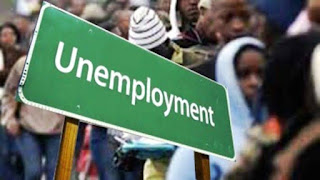As student debt climbs and wages stagnate, many recent graduates in the United States are finding the job market increasingly difficult to navigate—particularly those entering fields unrelated to their degrees. About 40% of college graduates now work in jobs that don’t require a degree, a trend known as underemployment.
This growing mismatch between education and employment is a concern for both students and policymakers. With the average annual cost of college nearing $35,000, graduates who land in unrelated or lower-paying roles may struggle to justify the investment. According to Strada Education Network, fewer than one in three Americans now believe a college degree is worth the cost.
The impact of underemployment varies by major. Degrees in fields like nursing (11.1% underemployment), computer engineering (13.3%), and civil engineering (15.9%) continue to lead to strong employment outcomes. In contrast, arts and humanities degrees often offer less direct career pathways.
While college can still offer personal growth and critical thinking skills, students are urged to research job prospects carefully before enrolling. Understanding industry demands and speaking with professionals can help students make more informed decisions about their education and future careers.
Recent findings from Degreechoices, a higher education research organisation, reveal that some university degrees are more likely than others to lead to underemployment.
The data highlights the top five degree programmes where graduates are most likely to work in roles unrelated to their field of study, compiled by AS.
1. Criminal Justice – 71.5% Underemployment Rate
Criminal justice graduates face the highest rate of underemployment. Despite ongoing national conversations around policing and legal reform, most graduates in this field do not secure roles directly related to their degree. Many find themselves in service-based jobs that do not require specialised training or a university qualification. The disconnect between course expectations and job outcomes appears to be significant.
2. Performing Arts – 65.9% Underemployment Rate
Graduates in the performing arts continue to face challenges in securing stable employment within their discipline. While some pursue roles in theatre, music, or dance, a majority take up work in unrelated areas, including hospitality and retail, to support themselves. The demand for performing arts roles is limited, and competition remains high.
3. Art History – 62.3% Underemployment Rate
A degree in art history is associated with a limited number of specialised career paths, often within museums, galleries, or academic institutions. Many graduates are unable to find work within these spaces and instead move into sectors that do not require a background in art or history. As a result, a large number end up working in administrative or entry-level service jobs.
4. Hospitality and Recreation – 57.6% Underemployment Rate
Graduates in hospitality and recreation are frequently drawn to the promise of working in travel, tourism, or leisure management. However, these industries are highly sensitive to economic conditions and seasonal demand. Many roles offer irregular hours and low wages. A significant portion of graduates in this field do not secure full-time positions that align with their academic training.
5. Liberal Arts – 56.7% Underemployment Rate
Liberal arts degrees cover a broad range of subjects but often lack a clear career trajectory. Without a specific skill set or technical training, many liberal arts graduates find themselves in jobs that do not require a university degree. The transition from education to employment is often marked by uncertainty and limited options for career development.
(BusinessDay)






.jpeg)





0 Comments